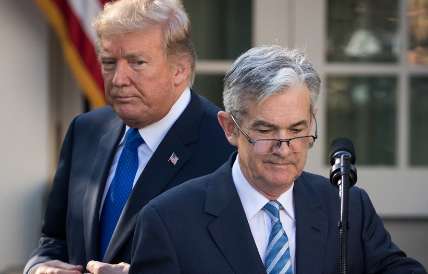Deutsche Bank: Fed's Leadership Change Could Trigger Unprecedented Easing
Deutsche Banks latest research report reveals a significant shift in market expectations for the Federal Reserve next year, anticipating that a new chair may drive sustained monetary easing.Deutsche B

Deutsche Bank's latest research report reveals a significant shift in market expectations for the Federal Reserve next year, anticipating that a new chair may drive sustained monetary easing.
Deutsche Bank's analysts say they Identified the "new chair premium" phenomenon through the statistical model, as the market is pricing in exceptionally loose policy under the new Fed Chair, Especially in Q3 2026 – coinciding with Leadership Transition.
They stated in its latest report that financial markets have shown a notable change in expectations for Fed policy next year, particularly with unusually aggressive rate cut forecasts following the appointment of a new Fed chair.
The term of current Fed Chair Jerome Powell is set to expire in May next year. However, former President Trump is considering announcing his nominee for the next Fed chair as early as this summer—far ahead of the traditional 3-4 month transition period. Insiders suggest Trump aims to influence market expectations and monetary policy direction even before Powell's term ends by naming a "shadow chair" early.
The report also notes that since dovish remarks last week from Fed Governor Christopher Waller and other officials, markets have priced in an additional ~10 bps of rate cuts by year-end.
Statistical Model Reveals Anomalous Pricing for Next Year: "New Chair Premium" Emerges
Deutsche Bank highlights that the most striking shift has occurred in expectations for mid-2024 rate cuts.
The report suggests markets increasingly expect monetary policy to remain accommodative once a new Fed chair takes office. Powell's term expires in May 2025, making this a key focal point for investors.
Using a regression model, Deutsche Bank uncovered a compelling pattern: pricing for rate cuts in Q2, Q3, and Q4 of next year was regressed against Q1, with residual analysis measuring the "abnormality" of forward rate cut expectations relative to Q1.
Deutsche Bank found that over the past month, these residuals turned significantly negative, particularly for Q3 2026—coinciding with the new chair's transition period. This indicates markets are pricing in an unusually loose policy environment under the new leadership, a deviation from recent historical norms.
However, the report advises caution regarding this "new chair premium." Since monetary policy decisions require majority support from the FOMC, a new Fed chair would need to persuade colleagues to back a different policy trajectory. This institutional constraint implies that any policy discontinuity around the leadership transition should be modest.
Notably, despite this divergence, markets still expect fewer rate cuts in Q2, Q3, and Q4 of 2026 compared to Q1, suggesting investors are not pricing in a sharp policy shift but rather an extended period of accommodative policy under the new chair.
Recent Market Pricing Shifts: Dovish Comments Drive Rate Cut Expectations
On Monday (June 23), Fed Governor Michelle Bowman discussed the economy and monetary policy, stating that she would support a rate cut as early as July if inflationary pressures remain contained.
Bowman cited rising risks in the labor market and inflation stabilizing toward the Fed's 2% target. Last Friday, Fed Governor Christopher Waller told CNBC he might support a July rate cut due to concerns about an overly weak labor market.
Deutsche Bank notes that since last Thursday, markets have priced in an additional ~10 bps of Fed rate cuts by year-end, primarily influenced by dovish remarks from Waller and Bowman. This shift reflects investors' immediate reaction to a perceived softening in the Fed's policy stance.
According to the latest FedWatch data, market-implied odds of a July rate cut stand at 20.7%, up from 12.5% a week ago, with traders now fully pricing in a September rate cut.
Disclaimer: The views in this article are from the original Creator and do not represent the views or position of Hawk Insight. The content of the article is for reference, communication and learning only, and does not constitute investment advice. If it involves copyright issues, please contact us for deletion.